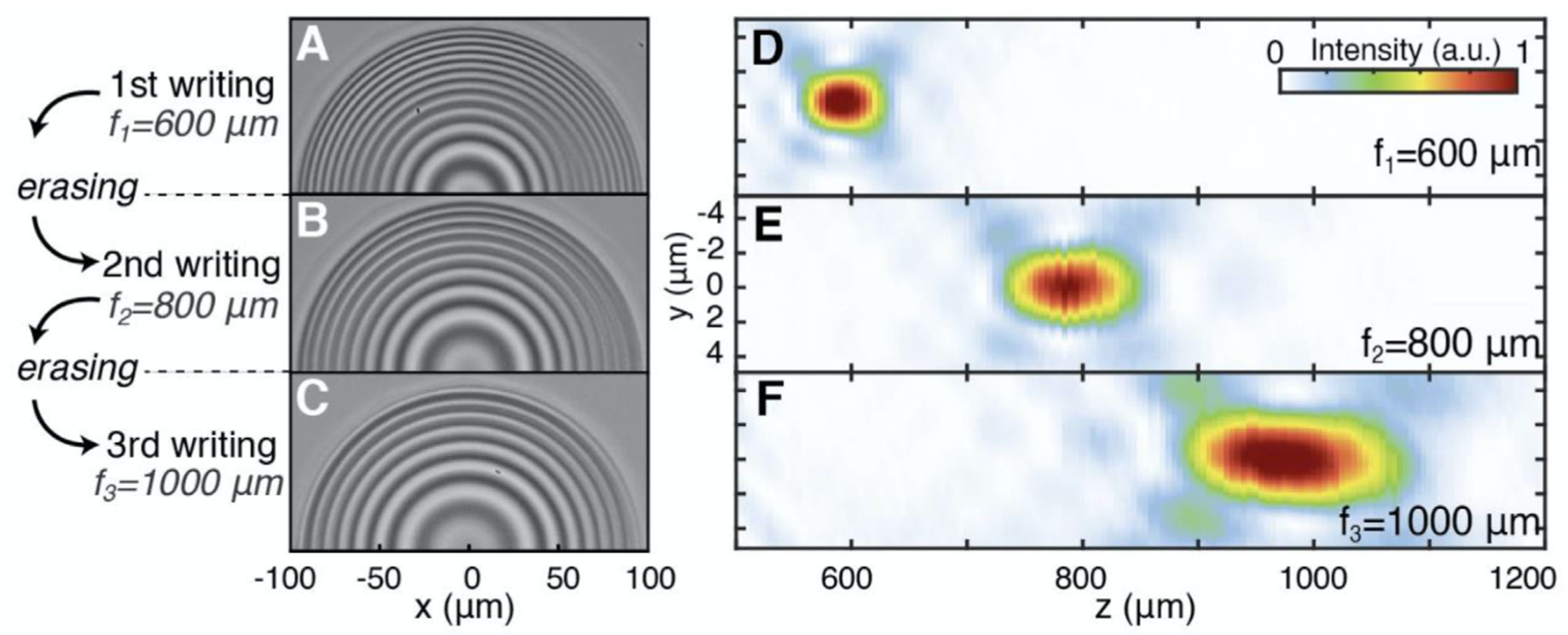The Vectorial Nano-imaging research line starts its activity at the Center for Nano Science and Technology of IIT in Milano in September 2019.
With the external support of several competitive grants (ERC consolidator grant METAmorphoses, ERC Proof of Concept MetaCam and ERC Proof of Concept 2Dchiral [European Research Council]; IDEAS project from the [European Space Agency]) the research is oriented towards different Nanophotonics activities that, although diverse, interestingly contaminate each other in the lab.
Structured light by means of dielectric optical metasurfaces – After introducing the first dielectric metasurface q-plate [Optics Express 25, 377 (2016)] and the metasurface J-plate for the most general spin to orbital angular momentum conversion [Science 358, 896 (2017)] while at Harvard University, Ambrosio’s group recently realized arrays of Orbital Angular momentum lasers. In a recent paper [Nature Photonics 16, 359 (2022)] they show 100 coupled lasers carrying orbital angular momentum. More interestingly, the laser network is tuned through the topological charge of the lasers. Spatial and temporal structuring of light [Nature Photonics 17, 822 (2023), Science Advances 11:eadr6678 (2025)] in amplitude, phase and polarization is the goal of this activity.

Scanning Probe Microscopy of polymeric and 2D materials – The Vectorial Nano-imaging group is using Scanning Probe Microscopy to investigate polaritonic waves in 2D materials. With respect to the observation of phonon polaritons that they demonstrated with different optical near-field techniques in the mid-IR [Light: Science and Applications 7:27 (2018); Science Advances 4:eaat7189 (2018); Science Advances 5:eaav8690 (2019)], they have now the possibility to target plasmon polaritons and excitons in semiconductive 2D materials in the visible and near-IR [Nature Communications 15:9727 (2024)]. Moreover, the group is also complementing optical nano-spectroscopy with mechanical analysis at the nanoscale, on polymers and 2D materials [ACS Nano 16, 7589 (2022), ACS Nano 19, 16297 (2025)].

Reconfigurable flat optical devices – This is a research that strongly involves the unique characteristic of surface structuring in azobenzene-containing polymers. Antonio Ambrosio discovered and reported the crucial aspects of such phenomenon years ago [Nature Communications 3:989 (2012); Physical Review Letters 110, 146102 (2013)]. The group is now exploiting this possibility to create optical devices that are, in fact, not just tunable but shapeshifting: gratings can tun into lenses and back into gratings, if and when needed [Advanced Materials Interfaces 8, 2101375 (2021); Optics Express 30, 12695 (2022); Laser and Photonics Reviews 16, 2100514 (2022)]. Introducing structured light in the process is the next step to achieve new schemes for several applications, from optics to microfluidics.

